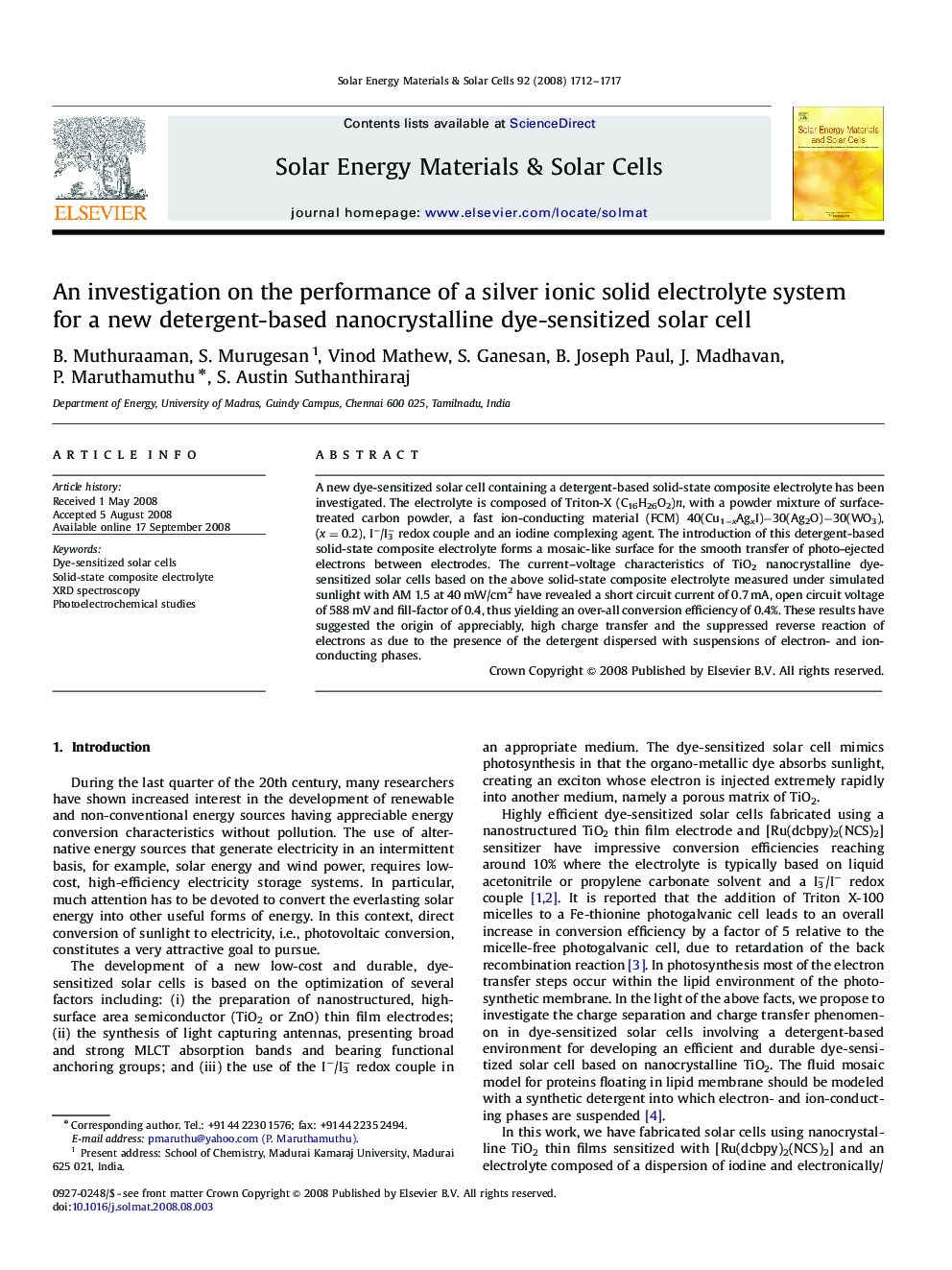| Article ID | Journal | Published Year | Pages | File Type |
|---|---|---|---|---|
| 80231 | Solar Energy Materials and Solar Cells | 2008 | 6 Pages |
A new dye-sensitized solar cell containing a detergent-based solid-state composite electrolyte has been investigated. The electrolyte is composed of Triton-X (C16H26O2)n, with a powder mixture of surface-treated carbon powder, a fast ion-conducting material (FCM) 40(Cu1−xAgxI)−30(Ag2O)−30(WO3), (x=0.2), I−/I3− redox couple and an iodine complexing agent. The introduction of this detergent-based solid-state composite electrolyte forms a mosaic-like surface for the smooth transfer of photo-ejected electrons between electrodes. The current–voltage characteristics of TiO2 nanocrystalline dye-sensitized solar cells based on the above solid-state composite electrolyte measured under simulated sunlight with AM 1.5 at 40 mW/cm2 have revealed a short circuit current of 0.7 mA, open circuit voltage of 588 mV and fill-factor of 0.4, thus yielding an over-all conversion efficiency of 0.4%. These results have suggested the origin of appreciably, high charge transfer and the suppressed reverse reaction of electrons as due to the presence of the detergent dispersed with suspensions of electron- and ion-conducting phases.
